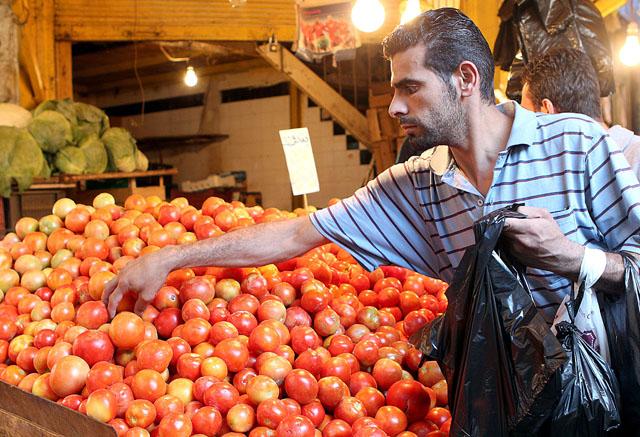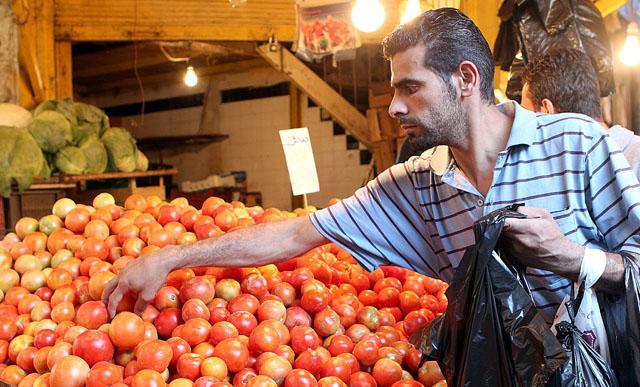You are here
‘Prices of tomatoes to drop in mid-November’
By Hana Namrouqa - Oct 28,2014 - Last updated at Oct 28,2014

AMMAN — Prices of tomatoes are set to drop in mid-November when farms in the highlands start supplying the local market with their produce, a government official said on Tuesday.
The supply of tomatoes in the local market has dropped because the crop’s production season in Mafraq ended with the end of orweh tishrineyeh and is now starting in the highlands, Agriculture Ministry Spokesperson Nimer Haddadin told The Jordan Times.
“The price of tomatoes will be temporarily high because of the low supply, but once produce from the highlands starts reaching the market, prices will drop,” Haddadin said.
Orweh tishrineyeh is a local agricultural term that refers to winter crops planted at the end of each year, when farmers grow vegetables in the Jordan Valley and other areas. Different kinds of vegetables are cultivated during this period, including cucumbers, tomatoes, aubergines and zucchini.
Prices of certain vegetables, particularly tomatoes, increase during this time of year, Haddadin said, noting that this happens because of the gap between the harvest season in the Jordan Valley and that of the desert, Mafraq and other areas.
“Local demand for tomatoes is 500 tonnes per day, but the actual amount of tomatoes that reach the local market doesn’t exceed 300 tonnes per day, which is causing prices to soar,” he noted.
Tomatoes top the list of the country’s overall agricultural exports, representing around 60 per cent, followed by cucumbers and eggplants, according to the ministry, which said that Jordan exports vegetables to Gulf countries, Iraq and Europe.
Exports of fruit and vegetables during the first nine months of this year increased by 14 per cent compared to the same period last year, ministry figures indicate.
The country exported 707,000 tonnes of agricultural produce in the January-September period, compared to 620,000 tonnes during the same period in 2013. Vegetables constituted 84 per cent of the exported produce, while fruit made up 16 per cent.
Related Articles
Jordan is among the top 10 world countries in terms of producing and exporting tomatoes, which constitute around 65 per cent of the total exported agricultural produce, according to officials.
A Ministry of Agriculture report issued on Thursday showed an increase in demand on Jordanian vegetables in Gulf markets, according to Ministry Spokesperson Nimer Haddadin.
AMMAN — Jordan's exports of fruit and vegetables to Gulf Arab countries have been increasing since the beginning of the year, with some 900

















